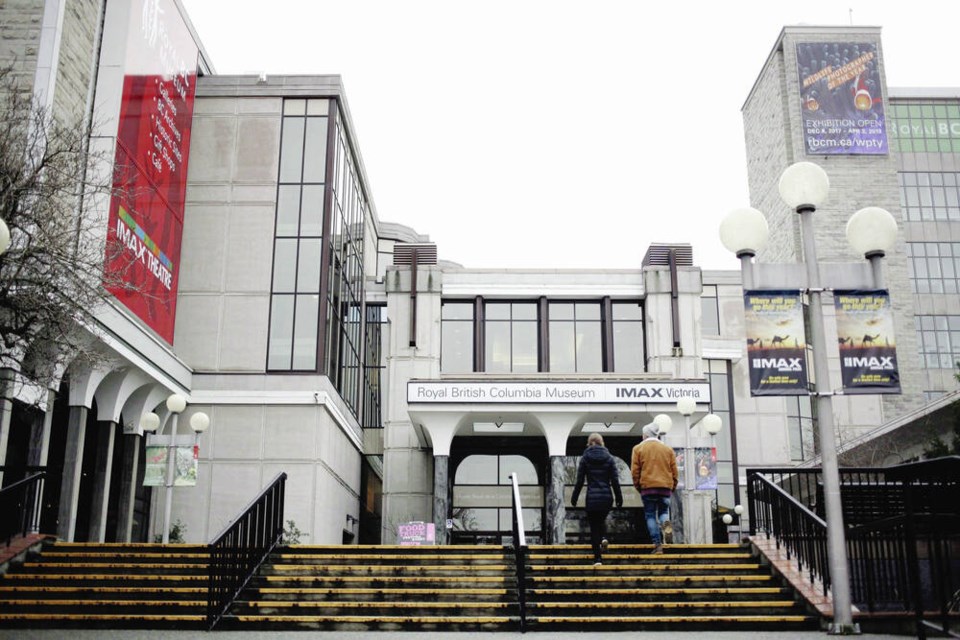• The museum was founded in 1886 in response to a petition signed by 30 prominent citizens. It was housed in a single room adjoining the provincial secretary’s office in the Capitol Buildings, which were nicknamed the Birdcages. John Fannin, an avid outdoorsman and collector and gifted taxidermist, was appointed its first curator.
• The provincial government has collected archival records since 1894, preserved by the Legislative Library. In 1908, the Provincial Archives was established as a separate institution, mandated to collect material of provincial significance.
• Over the next 12 years, the museum was relocated twice, first to the former Supreme Court building, and then in 1898, to the east wing of the newly constructed Legislative Buildings. During those years, 3,700 people registered their visits to the museum each year (actual attendance was probably two to three times that number).
• In 1913, the province proclaimed the Museum Act, giving the museum formal operating authority and defining its objectives to secure and preserve specimens illustrating the natural history of the province; to collect anthropological material relating to the Indigenous peoples of the province; and to obtain information on the natural history of the province, and diffuse knowledge regarding the same.
• Over the next 30 years, the museum grew. New space was made for ethnological artifacts when the basement of the east wing was available in 1921; William Newcombe, son of C.F. Newcombe, and Dr. Ian McTaggart Cowan joined the museum as assistant curators of biology; research papers were published; and visitors arrived from across Canada and throughout the United States — including U.S. President Theodore Roosevelt.
• In 1941, six vacant lots at the corner of Belleville and Douglas Streets in Victoria were transformed into Thunderbird Park, where totem poles from the museum’s collection were displayed. Ten years later, deterioration of the poles had become a serious concern, and anthropology curator Wilson Duff began a pole restoration program. The totem poles currently on display at Thunderbird Park are replicas of the originals, which have been moved inside, where they can be properly preserved.
• By 1961, estimated annual attendance at the museum had reached 100,000.
• In 1963, Premier W.A.C. Bennett announced plans to build a new museum and archives as a Canadian Centennial project.
• In 1966, Queen Elizabeth, the Queen Mother, dedicated the cornerstone for the current museum exhibits building.
• In 1969, the second museum building, the Fannin Tower, was finished, and the museum staff and collections made the formal move into the new facilities.
• In 1977, the 12,000-year Gap and the First Peoples Galleries opened to the public.
• In 1979, Living Land, Living Sea, the first phase of the permanent natural history galleries, opened.
• The museum celebrated its centennial in 1986, and competed the second phase of its natural history galleries, Open Oceans.
• In 2003, through the proclamation of a new museum act, the B.C. Archives, Helmcken House, the Netherlands Carillon, Thunderbird Park, St. Ann’s Schoolhouse and the Royal BC. Museum came together as the Royal B.C. Museum Corporation, creating a cultural precinct.
• In fall 2021, the province and museum board announced the closing of the third floor on Dec. 31 as the museum undergoes a “decolonization” of exhibits. The museum is starting consultations with “all voices” in the province to re-curate and redesign the space now occupied by Becoming B.C. and First Peoples displays.
- - -
Royal B.C. Museum sees rush for last look at Old Town before it's dismantled




